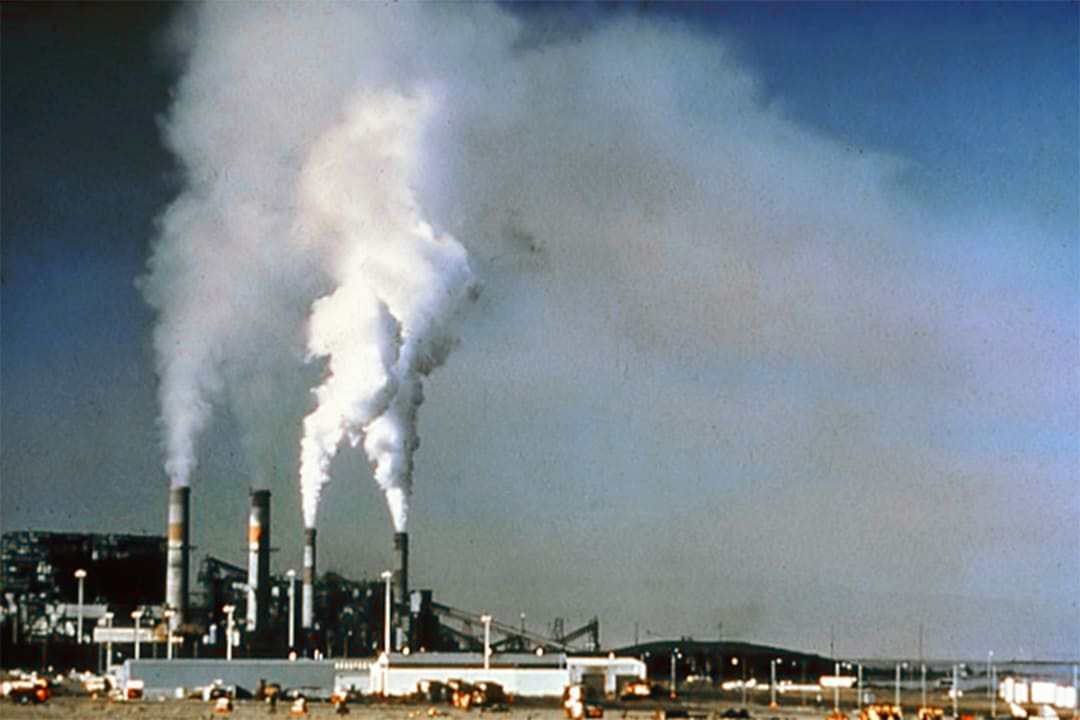In 2016, researchers in Xi’an, China — a city long plagued by air pollution — constructed the world’s largest experimental air-purifying tower. The researchers, from the Institute of Earth Environment at the Chinese Academy of Sciences, found that the surrounding area of over three square miles has improved in air quality.
Data collected in the vicinity of the experimental tower shows that this kind of tower presents promising solutions for cities contending with the escalating air pollution crisis. If similar initiatives were implemented globally, their impact could extend beyond individual cities, resulting in significant benefits for public health.
Air quality: The current landscape
Awareness of air pollution’s detrimental effects dates back several decades, when the US government was one of the first countries to introduce legislation to reduce air pollution: the Air Pollution Control Act, signed in 1955, provided funding for air pollution research. The enactment of the 1970 US Clean Air Act allowed regulators to limit emissions from both industrial sources and transportation, leading to efforts to reduce air pollution emissions, such as investments in the development of cleaner, less carbon-intensive technologies.
Despite increased awareness of air pollution, data reveals that hardly any place on Earth is spared from unhealthy air conditions. A study published in The Lancet Planetary Health journal found that only approximately 0.2 per cent of global land has been exposed to fine particulate matter — any particles that are 2.5 microns or smaller in diameter, also known as PM2.5 — at concentrations lower than the World Health Organization’s (WHO) recommended annual limit of five micrograms per cubic metre.
This means that more than 99 per cent of global land is exposed to dangerous concentrations of fine particulate matter, which originates as a byproduct of industrial combustion and poses a significant threat to human health due to its ability to be inhaled deep into the lungs.
A 2022 WHO report looked at findings from over 6,000 cities across 117 countries that are monitoring air quality. About 99 per cent of the global population breathes air that’s over WHO’s quality limits, with the most significant impacts on low and middle-income countries.
WHO’s data from 2019 showed that regions with high industrial activity, like areas in southern and eastern Asia, face a heightened risk of air quality issues. In some of these places, air quality is over WHO’s daily limit — 15 micrograms of gaseous pollutants per cubic metre — for over 90 per cent of the year. This leaves the majority of the global population vulnerable to the health risks associated with chronic exposure to air pollution, such as lung cancer and heart diseases, resulting in 6.7 million premature deaths worldwide.
How does the giant air filter work?
Standing at over 100 metres tall — and costing the Shaanxi provincial government roughly 2.69 million CAD to build — Xi’an’s air-purifying tower produces clean air at a rate of about eight cubic metres per second. The tower operates using solar energy that traps solar heat in the tower, which heats up polluted air drawn in through the tower’s base in an effect similar to the greenhouse effect. This heated air then rises through the filters within the tower.
Since its activation, the tower has cleansed more than 10 million cubic metres of air daily, significantly enhancing the air quality in its vicinity. Plans are underway to construct more towers across China in areas with unhealthy air quality levels, including Guangzhou, Hebei, and Henan.
To assess the impact of these experimental air purifiers, Xi’an placed over a dozen pollution monitoring stations across a 10-square-kilometre area around the tower. In just a few months, preliminary results found a 15 per cent reduction in PM2.5 levels during episodes of heavy pollution.
With promising preliminary results and expansion plans to introduce these projects to more Chinese cities, other countries are taking note. Kurin Systems, an air purification company based in India, was inspired by the giant air purifier tower in Xi’an and intends to install a 12-metre purification tower in New Delhi, long plagued with poor air as one of the world’s most polluted cities, with hopes to purify 1,130 cubic metres of air per day within an area of about five square kilometres.
Limitations and concerns for giant air purifiers
While large air filter towers hold potential for providing clean air to surrounding communities, their capacity remains local. Cao Junji, a chemist at the Chinese Academy of Sciences’ Key Laboratory of Aerosol Chemistry and Physics in Xi’an, proposed building up to half a dozen purifying towers around the city to significantly reduce air pollution. Furthermore, these air purifiers cannot replace indoor air filtration systems for buildings in highly polluted areas, such as factories and airports. In such cases, air purifiers and air filters remain the best solution for safe indoor air quality.
Critics argue that without more data regarding the power consumption for these filtration towers, the energy input required for operating these giant air purifiers seems like they might not be the best use of energy. Redirecting the same amount of power to generate clean electricity or reducing pollution at the source could also significantly reduce pollution. Other scientists worry that these towers may not effectively filter toxins that can be precursors to harmful particulate matter or liquids capable of penetrating the lungs and causing health problems, such as sulphur dioxide gas or secondary gaseous pollutants like ozone.
Nevertheless, giant air cleaners offer hope in areas where air quality is a major concern. While they may have limits and cannot single-handedly purify the air for entire cities, they serve as a valuable resource for improving air quality in regions of dangerous air quality levels where the reduction of air pollution is very difficult. They can potentially provide a temporary solution as scientists and policymakers work on strategies to reduce air pollution at its source.


